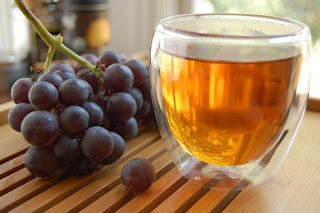
Thanks to Mary, I've had the chance to try something new, a black tea from Georgia. I didn't even know they grew tea in Eastern Europe.
 This tea is made by Iuri in the village of Nasakirali and was picked in the Spring. The leaves look more like a yancha than any other black tea I've seen, long and twisted, fluffy. It has a very mild aroma, just a bit of fruit.
This tea is made by Iuri in the village of Nasakirali and was picked in the Spring. The leaves look more like a yancha than any other black tea I've seen, long and twisted, fluffy. It has a very mild aroma, just a bit of fruit.

 This tea is made by Iuri in the village of Nasakirali and was picked in the Spring. The leaves look more like a yancha than any other black tea I've seen, long and twisted, fluffy. It has a very mild aroma, just a bit of fruit.
This tea is made by Iuri in the village of Nasakirali and was picked in the Spring. The leaves look more like a yancha than any other black tea I've seen, long and twisted, fluffy. It has a very mild aroma, just a bit of fruit.I think the parameters of 3g per 8 0z for 4 min. was perfect, though gong fu would be nice, too. The liquor is a beautiful honey brown.
To fully appreciate this tea, I think it must go unadulterated, lest you over power the nuances. It has the simplicity of a good Ceylon with the honey-sweetness of a dian hong and hints of fruit and spice in the finish. Classy, to use an emotive descriptor.

By the way, those seedless concord grapes were amazing.






